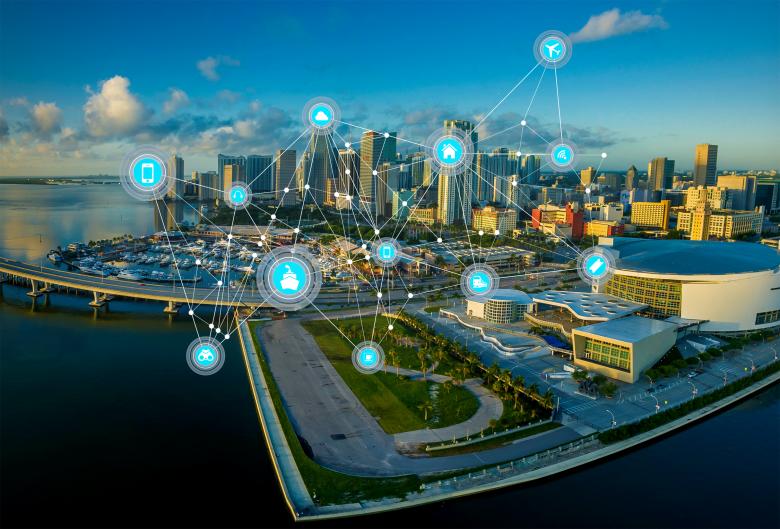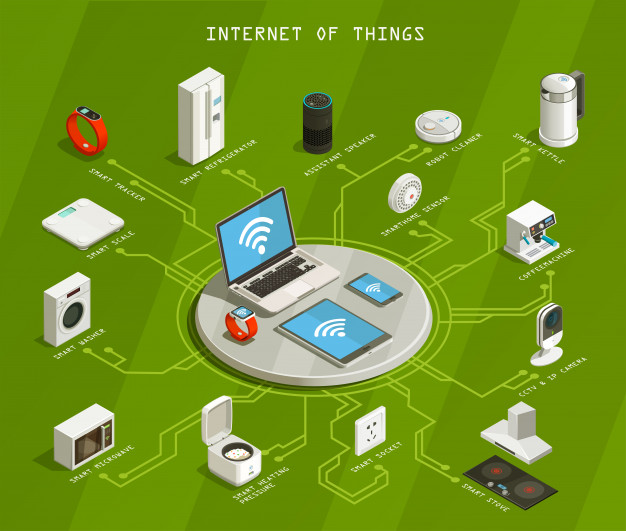Overall applications of Internet of Things technologies are broad because they can remotely integrate with any technology to collect and distribute relevant data regarding operations and monitor environmental conditions.
What is the Internet of Things
The Internet of things refers to how technology uses the Internet to combine different objects, devices, and sensors to make peoples’ lives more manageable, efficient, and effective.
Most Internet of Things technology is still in the infant development stages. However, many businesses across different industries are rapidly adopting applications of Internet of Things -connected devices to control and automate business processes and increase efficiency.
This article will underline some of the leading applications of the Internet of Things.
Industrial Automation
In industrial automation, timely development aligns with product quality as critical determinants of the Return on Investment in any business. IoT Applications allow businesses to re-engineer products and services to improve customer experience and reduce performance costs.
Automation currently focuses on improving quality and flexibility during the manufacturing process.
For example, the automobile industry used to have pistons installed manually with an error rate of 1-1.5%. Now the task uses automated artificial intelligence IoT devices, and the error rate has reduced to 0.00001%.
Wearables
People’s accessories have developed in an energy-efficient manner that allows them to get equipped with IoT sensors and enable data collection, measurements, and readings regarding users.
Consider upright Go, a small wearable device, which revolutionized spinal health by helping patients train themselves to employ a healthier posture by providing biofeedback. It produces a slight vibration when the person wearing the device slouches.
Applications of Internet of Things in Healthcare
Medical practitioners can use various sensors connected to particular patients and effectively monitor real-time changes in patient’s conditions, regardless of where they are. IoT has made it possible to monitor specific patient variables, remotely improving patient care and reducing health risks.
Some healthcare facilities have already employed mobile applications, including social media, text, and calls, to communicate with clients and generate leads. A trend that’s on the verge of exploding within the next few years.
Applications of IoT in Predictive Maintenance Management
IoT technology is seeing extensive software developments and sensors specialized in predictive maintenance. It is purposively helping the extension of the life of machinery and increasing the reliability and availability of assets.
IoT application is technically unlimited, and the software and sensors underline real-time maintenance needs and management of assets.
Traffic Monitoring
The world economies are continuously expanding, and more cities are experiencing excessive traffic. Many Internet of things applications are on the market to promote efficient road use and reduce traffic in growing cities.
IoT is fueling the concept of smart cities with smart navigation.
Business Asset Management
Provisions for fleet managers to install IoT sensors on their fleet vehicles help propagate interconnectivity between fleet assets, drivers, and fleet managers.
Everyone concerned about the fleet in an official capacity can use the Internet of Things software to collect and process data regarding the vehicle’s operation, activities, and health.
Hospitality
Tremendous competition within the hospitality industry drives hotel and accommodation businesses to make significant investments in many emerging applications of internet of things as they work towards upgrading service quality and improving hospitality.
Artificial intelligence IoT devices promote quicker and efficient customer service
IoT connected devices facilitate automation to enhance customer services and customer experience. Hotels use inventions such as electronic keys, which guests can receive on their mobile devices. Guests also get personalized services about their interests and room service requirements.
Water Supply and Sanitation
Like intelligent grids, water and sanitation businesses can install specific IoT devices and sensors on water meters and use software to connect them to the Internet for real-time data collection and analysis.
You can discover leakages before they get out of hand.
Real-time data collection and analysis using IoT enables easy detection of faults and changes in customer needs. Consumers can also monitor their consumption in real-time, receiving automatic alerts when misuse gets detected.
Agriculture
The need for farmers to keep track of essential data such as moisture levels and soil acidity, and plant nutrients’ availability has fueled smart farms. IoT facilitates farmers’ capacity to use devices and sensors to record and report the information needed to avoid losses and make the most profitable decisions regarding their crops and livestock.
There are now vertical farms made to enhance plant growth using 90% less water than traditional farming methods. Plants can grow without using pesticides, herbicides, fungicides. Food that’s grown this way maintains a rich fresh taste.
Smart farms shorten the growth cycle of plants, up to half the time spent using traditional farming. Also, they use vertically stacked beds, a method that enables farmers to produce products in larger quantities per square foot.
Energy Saving and Smart Grids
Energy companies use IoT to equip meters with sensor technology at strategic points and make provisions for effective grid control and monitoring of their electrical networks.
The consumption data collected and distributed between clients and businesses drive valuable decision-making and efficient service provision.
Did you find this article helpful?
Please leave a comment.
Contact us for a free chat with our seasoned IoT professionals who will help you understand the many exploits and applications of IoT. Receive life-changing insights!!




